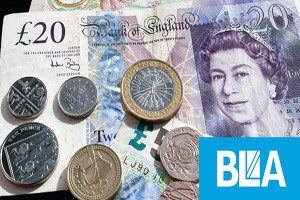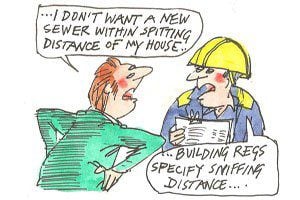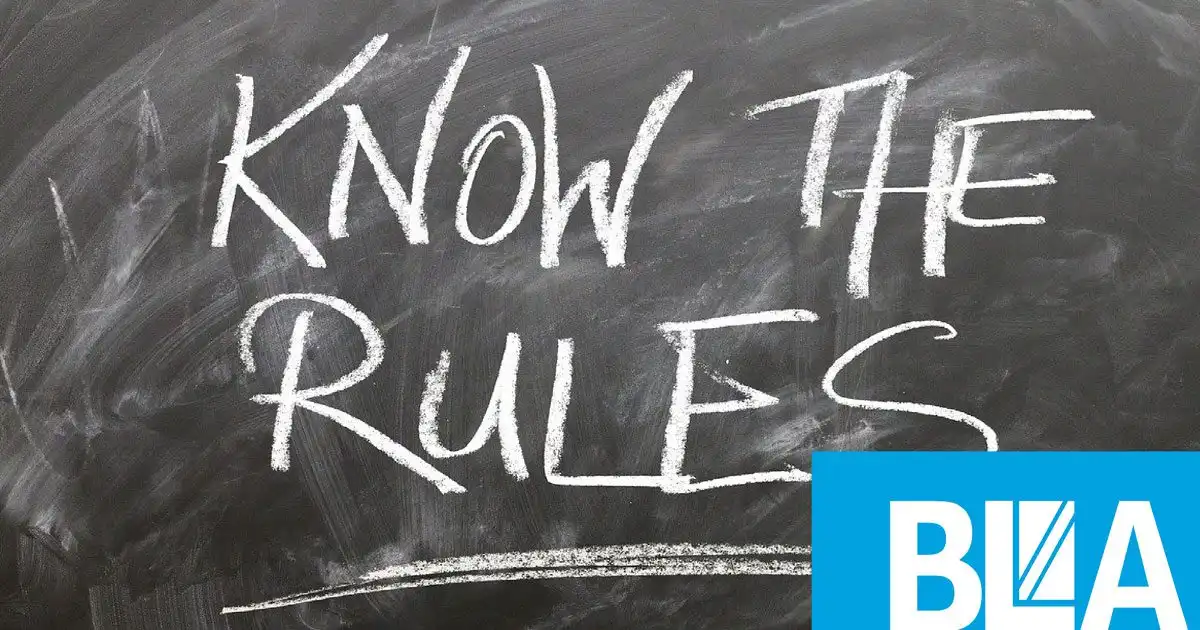[lwptoc]
Tax Tips & Guide for Landlords
This is a guide so you have a basic understanding of UK tax for landlords. You must obtain advice from a qualified Accountant before acting or implementing any of the points below.
If you are renting out your property and are unsure about your tax obligations, we have put together a comprehensive list to help you. You can also visit the HMRC website later to check the rules on paying tax when renting out your property.
Landlords paying Income Tax
When you start renting out a property, you must tell HM Revenue and Customs as you may have to pay Income Tax (*if you own the property and not your company).
If you do not, you could be charged a penalty. If you owe taxes from previous years, it’s best to contact HMRC directly. The. Gov. UK website states that they may consider your case more favourably.
Any profit you make as a landlord from renting out a *property is part of your income and is subject to Income Tax.
The tax you pay on this is subject to your total taxable income.
If you pay the basic tax rate, you will pay 20%; if you’re a higher-rate taxpayer, 40%; and if you’re in the additional rate bracket, 45%.
It’s also worth noting that if you live in Scotland, you may pay a different rate of Income Tax than the rest of the UK.
If you are eligible as a landlord, you may also be able to claim Income Tax reliefs.
These reliefs mean that you either pay less tax to account for the money you’ve spent on specific items or get your tax repaid.
Sometimes, you get these tax reliefs automatically, but there are others you must apply for to be eligible.
Landlords to calculate the costs, it may be worth setting up a separate bank account for your rental income.
This way, it will stop your various revenue streams from becoming confused, and it may also be easier for you to work out your profit, expenses, and other incomes.
It is vitally important for landlords to remember that only profits from renting your rental property are liable for income tax and that to calculate your profits, you will have to deduct “allowable expenses” first.
What are “allowable expenses” for UK landlords?
For landlords to calculate expenses, you need to know the difference between revenue and capital expenses.
Revenue = revenue expenses related to the day-to-day running and maintenance of the property, which can be offset against any income tax bill.
Capital expenses = expenses that will increase the property’s value, such as renovations.
These cannot be deducted from your income tax bill, but you may be able to offset them against Capital Gains Tax.
Any costs deemed essential to you performing your duties as a landlord can be offset against your rental income, substantially reducing your tax liability.
Allowable expenses are things you need to spend money on as part of the day-to-day running of the property, including:
- Accountancy expenses (incurred in preparing rental business accounts but not for preparing personal tax returns).
- Advertising costs of attracting new tenants.
- Charge for inventories.
- Costs of rent collection.
- Council Tax, while the property is vacant and available for letting.
- Ground rent.
- Insurance against loss of rents.
- Insurance claim fees.
- Insurance on buildings and contents.
- Mortgage interest charges. As such, you can deduct any funds used to pay the mortgage interest charged by your lender. The capital repayment element of your mortgage is not deductible (other conditions apply).
- Interest paid on loans to build or improve premises (further conditions apply).
- Legal and professional fees (any fees incurred in the day to day management of your rental property can be deducted. Such fees include the cost of preparing leases and inventories, collecting rent, preparing your tax return for the rental property, and letting agent charges).
- Letting agent fees.
- Agreement fees for leases of less than a year.
- Maintenance charges made by freeholders, or superior leaseholders, of leasehold property.
- Maintenance contracts (for example, gas servicing).
- Marketing expenditure incurred during advertising the rental property and attracting new tenants.
- Provision of services (for example, gas, electricity, hot water).
- Rental warranty and legal expenses insurance.
- Replacing windows.
- Repairs which are not significant improvements to the property, including damp and rot treatment; mending broken windows, doors, furniture, cookers, lifts etc.; painting and decorating; replacing roof slates, flashing and gutters; repainting; and stone cleaning.
- Revenue costs of travelling between different properties solely for the rental business are an allowable deduction in computing rental business profits.
- Water rates.
If you are a landlord who is letting a furnished property, then you can also claim 10% of the net rent as what is known as a ‘wear and tear allowance’.
This can be used on any furnishings that you provide to your tenants. For this, the net rent is the amount you receive, less any costs your tenant would usually pay, such as council tax.
However, in the 2015 summer budget, the Chancellor of the Exchequer, George Osborne, announced a slight change to the legislation on “allowable expenses”.
Landlords can currently deduct 10% of the rent charged for “acceptable wear and tear”, even if no improvements have been made.
However, starting in April 2016, landlords can only deduct expenses they incur.
Tax breaks for landlords changed in the 2015 summer budget.
In the summer 2015 budget, George Osborne announced that tax breaks for buy-to-let landlords would be curbed to “create a more level playing field between those buying a home to let and those buying a home to live in”.
As a result of these changes, the amount of tax landlords can reclaim as relief will be capped at the basic rate of tax over four years beginning in 2017.
This will be the case regardless of whether the landlord is paying the lower or upper tax rate, meaning that the amount of tax relief that landlords in the top tax brackets receive on their mortgage interest payments will be slashed.
As such, relief for finance costs will be restricted to the basic rate of Income Tax as of 6 April 2017.
These financing costs include mortgage interest, interest on loans to buy furnishings and fees incurred when taking out or repaying mortgages or loans.
As a result, Landlords will no longer be able to deduct all their costs to arrive at their property profits. Instead, they will receive a basic rate reduction from their Income Tax liability. The scheme will be gradually introduced, meaning that:
- From 2017 to 2018, the deduction from property income (as is currently allowed) will be restricted to 75% of finance costs. The remaining 25% is available as a basic rate tax reduction.
- In 2018-2019, this will change to 50% finance costs deduction and 50% given as a basic tax reduction.
- In 2019-2020, this will change again to 25% finance costs deduction and 75% given as a basic rate tax deduction.
- From 2020-2021, all financing costs incurred by a landlord will be given as a basic rate tax deduction.
It is intended to help make the tax system fairer and ensure landlords with higher incomes no longer receive the most generous tax treatment.
The changes’ gradual introduction over four years from April 2017 should theoretically help landlords adjust.
Calculating your profits If you are looking to work out your net profit for your lettings as a single business, then you must:
- Add together all your rental income from all your properties
- Add together all your allowable expenses
- Take away the expenses from the income
If a landlord is making a loss, what can be done?
If a landlord is losing money on rental properties, you must deduct the losses from profits.
Enter the figure on your Self-Assessment form, remembering that your losses can be offset against future profits (by carrying them over to a later year) or against profits from other properties in your property portfolio.
Remember to keep your paperwork:
- It is recommended that you retain the following information and documents relating to the rental property:
- All contracts relating to the property’s purchase, sale, or lease.
- Details of any properties you have put into a trust or transferred to others.
- Any evidence of significant gains or losses.
- Records of all mortgage accounts detailing each payment’s interest and capital repayment elements.
- Bills and invoices display payment records for any costs relating to the property’s purchase, repair, improvement, or sale.
Landlords should keep any evidence proving when you may have lived in your rental property, e.g. tenancy agreements proving commencement dates.
Landlord Buy-to-Let Tax Tips – Capital Gains
When it comes to landlord capital gains tax, you should consider the following tips:
- They will be added to the cost of the property when it is sold and be deductible against any capital gain.
- Legal, management and other professional fees such as letting agency fees.
- Other property expenses, including building insurance premiums and corporation tax liabilities on property profits, unlike income tax, as shown above, do not allow you to offset all your mortgage interest/finance costs.
When you dispose of property investment, you must pay Capital Gains tax.
The gain is computed as follows: £200,000 net sales price (including legal/agent fees and selling fees) £100,000 purchase price. Every individual is allowed a Capital Gains annual allowance.
These are as follows: 2015 to 2016 2016 to 2017 2017 to 2018 2018 to 2019 2019 to 2020 Capital Gains Tax annual allowances £11,000 £11,100 £11,300 £11,700 £12,000 £100,000 capital gain from above £12,000 capital gain annual allowance £78,000 taxable capital gain.
If the above person were a high-rate taxpayer, the tax would be as follows: £78,000 X 28%. We have always said that Capital Gains Tax is optional.
Landlords paying Income Tax
You must contact HMRC if your income from property rental is between £1,000 and £2,500 a year, and you must complete a Self-Assessment tax return if your income is between £2,500 and £9,999 after allowable expenses (or £10,000 or more before allowable expenses).
Any tax due is payable 30 days after completion unless the vendor files Self-Assessment tax returns, in which case the tax must be paid by 31 January after the tax year of disposal.
Tip: To avoid penalties, maintain careful records of all rental income and expenses and keep them safely until the later of 22 months from the end of the tax year to which they relate or 15 months after submission of your tax return.
Completing your tax return Tip: If you complete your Self-Assessment tax returns online, you get an extra three months to submit.
The deadlines for online and paper tax returns are listed on the HMRC website, which also provides further information about the current tax year.
The site also provides helpful guidance regarding how you complete your tax return.
Your tax return must be completed accurately, and within the relevant timeframes, otherwise, you can face penalties.
Taxation Rules for Landlords 2018-2019 Update
Rental income lower than £1,000 a year from 6 April 2017, a property allowance became available if your combined rental income from the UK, overseas and commercial property is under £1,000 (before expenses).
It may be worth setting up a separate bank account for your rental income to calculate your costs to avoid confusion.
Any costs deemed essential to you performing your duties as a landlord can be offset against your rental income, significantly reducing your tax liability.
Calculating your profits If you’re looking to work out your net profit for your lettings as a single business, you must add together all of your rental income from all of your properties, add together all of your allowable expenses, and subtract the expenses from the income.
If you are making a Loss on your property
If you’re losing money on your rental properties, you’ll need to deduct any losses from profits and enter the figure on your Self-Assessment form. Remember that your losses can be offset against future profits (by carrying them over to a later year) or against profits from other properties in your property portfolio.
Tip: To avoid penalties, maintain careful records of all rental income and expenses and keep them safely until the latter 22 months from the end of the tax year to which they relate or 15 months after submission of your tax return.
Buy-to-Let Tax Tips – Mortgage
Section 24 Mortgage Interest Relief – HMRC has introduced a new legislation called Section 24 Mortgage Interest Relief.
Before April 2017, landlords were able to offset the mortgage and interest costs against their property income.
These mortgage interest before section 24 helped landlords to reduce their property profits by setting off 100% of the interest against the profit.
With a Section 24 mortgage interest relief cap, landlords will no longer be allowed.
Mortgage interest for landlords will not be tax-deductible from 2021.
Some British Landlord Association members have seen their tax increase beyond 60%-70% because of the Section 24 mortgage interest relief cap changes.
By way of example: £12,000 rental income £8,000 mortgage interest costs £6,000 other allowable expenses (£2,000) loss that is made Section 24 tax changes the following taxable profits will be made £12,000 rental income £0 mortgage interest cost £6,000 other allowable costs £6,000 taxable profit Tax is charged on the calculated taxable profit even though there is an actual loss of £2,000.
You will pay income tax if you take more than £2,000 dividends as follows – 7.5% as a basic rate taxpayer – 32.5% as a high rate taxpayer – 38.1% as an additional rate taxpayer.
The mortgage interest rate is likely to be higher in a company than in a buy-to-let mortgage in your own name.
Landlord tax Tips on an empty property?
Void period expenses – If, for any reason, your buy-to-let property is empty for any period, any expenses such as utilities or council tax incurred when the rental property is empty can be claimed as a letting expense.
- What tax will I pay when selling the property?
- Solicitors and conveyancing fees
- Estate agents’ fees
- Expenses incurred when improving the property
- Advertising the property for sale
- Stamp Duty
How much tax do you have to pay on rental income?
As a landlord, you must pay tax on any profit you make from renting a property.
How much tax you pay primarily depends on:
How much profit did you make?
Your personal circumstances, e.g. how much income you get from other sources (as this determines what tax bracket you are in)
Your rental profit is calculated by deducting your allowable expenses from the rental income you receive. In short, rental income less your expenses = profits.
What are the allowable Tax expenses for landlords?
Below is a list of (full list above) landlord expenses you can deduct:
- General maintenance and repairs to the property
- Water rates, council tax, gas, and electricity Landlord Insurance
- Costs of services, including the wages of gardeners and cleaners
- Letting agent fees and management fees
- Accountant’s fees
- Direct costs such as phone calls, stationery, and advertising for new tenants
These allowable expenses are exclusively for renting out the rental property.
For example, you should not buy wall tiles for your home and then claim them as an expense on your rental property.
However, if you purchased a bulk order of wall tiles and used some in your home and some in the rental property, you could claim part of the expenses. You must keep a copy of all your expense receipts.
Below are a few examples of the landlord expenses you cannot deduct:
- Home improvement costs
- Private phone calls
- Clothing
- Personal expenses
What are the allowable expenses for landlords?
Despite the recent tax changes, there are several expenses landlords can still deduct from the cost of their tax bill. Some of the main ones are:
They are as already listed above; we have relisted them again below:
- Accountancy expenses (incurred in preparing rental business accounts but not for preparing personal tax returns).
- Advertising costs of attracting new tenants.
- Charge for inventories.
- Costs of rent collection.
- Council Tax, while the property is vacant and available for letting.
- Ground rent.
- Insurance against loss of rents.
- Insurance claim fees.
- Insurance on buildings and contents.
- Mortgage interest charges. You can deduct any funds used to pay your lender’s mortgage interest. The capital repayment element of your mortgage is not deductible (other conditions apply).
- Interest paid on loans to build or improve premises (further conditions apply).
- Legal and professional fees (any fees incurred in the day-to-day management of your rental property can be deducted. Such fees include the cost of preparing leases and inventories, collecting rent, preparing your tax return for the rental property, and letting agent charges).
- Letting agent fees.
- Agreement fees for leases of less than a year.
- Maintenance charges made by freeholders, or superior leaseholders, of leasehold property.
- Maintenance contracts (for example, gas servicing).
- Marketing expenditure incurred during advertising the rental property and attracting new tenants.
- Provision of services (for example, gas, electricity, hot water).
- Rental warranty and legal expenses insurance.
- Replacing windows.
- Repairs that are not significant improvements to the property, including damp and rot treatment, mending broken windows, doors, furniture, cookers, lifts, etc., painting and decorating, replacing roof slates, flashing, and gutters, repainting, and stone cleaning.
- Revenue costs of travelling between different properties solely for the rental business are an allowable deduction in computing rental business profits.
- Water rates.
How do you work out your rental income?
Your rental income is made up mainly of the rent you charge for your property but also may include charges for additional services you might offer, such as:
- The use of furniture
- Cleaning & maintenance of communal areas
- Hot water
- Heating
- Electricity
- Repairs to the property
- Non-refundable deposits, or any money that has been kept over from a returnable deposit
- Broadband
- Parking
All British Landlord Association members have free access to an accountant for tax advice.
Author: Amanda Goldsmith
Date: 16th of October 2002
The British Landlords Association is a free national residential and commercial landlords association. Why not join us now?
Disclaimer:
This post is for general use only and is not intended to offer legal, tax, or investment advice; it may be out of date, incorrect, or maybe a guest post. You are required to seek legal advice from a solicitor before acting on anything written hereinabove.





